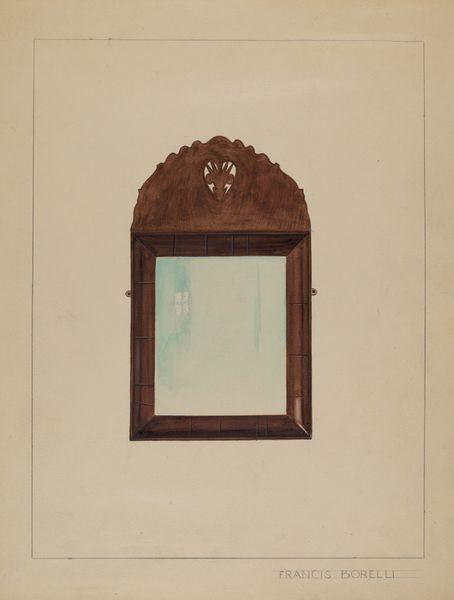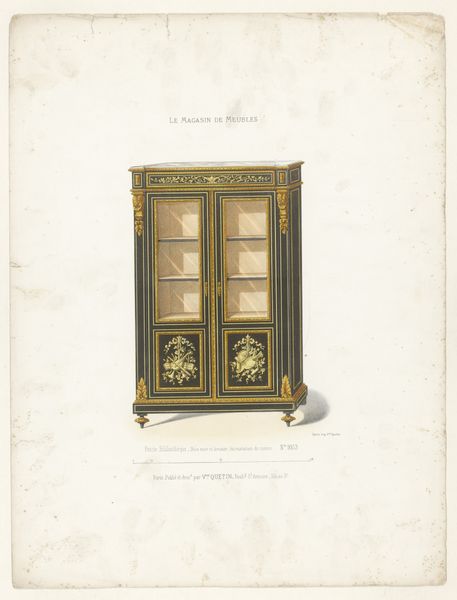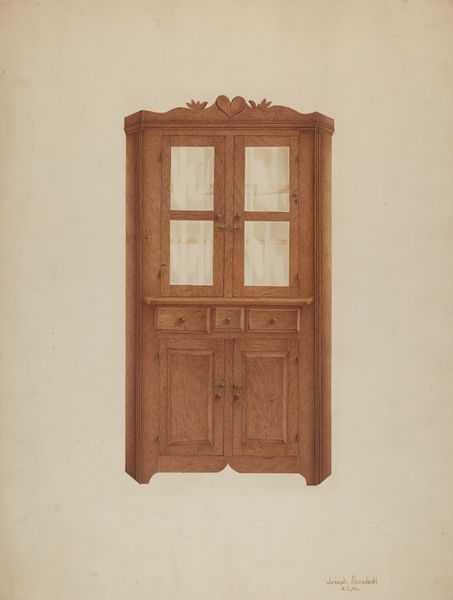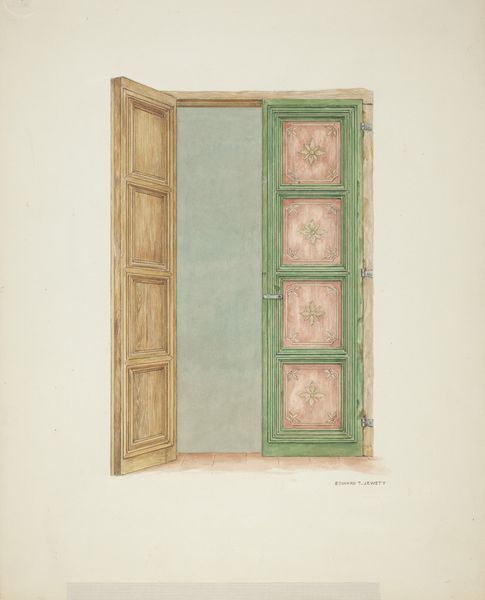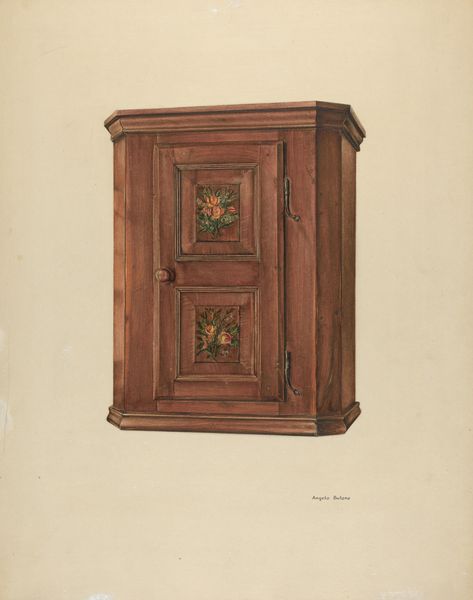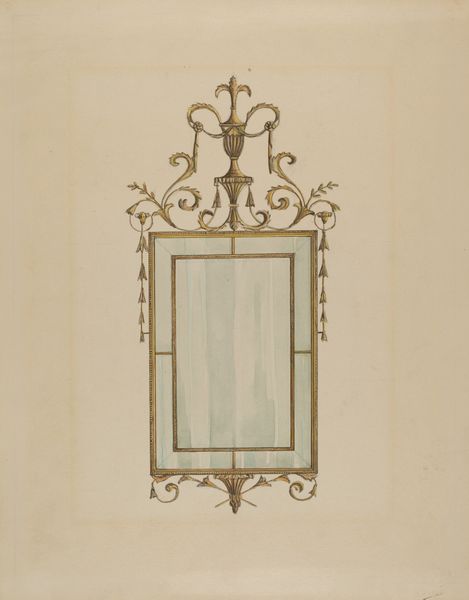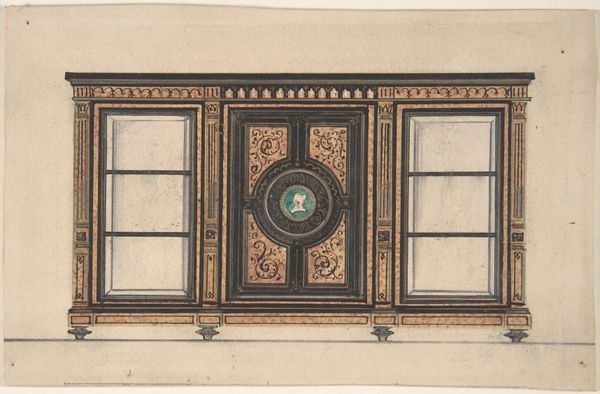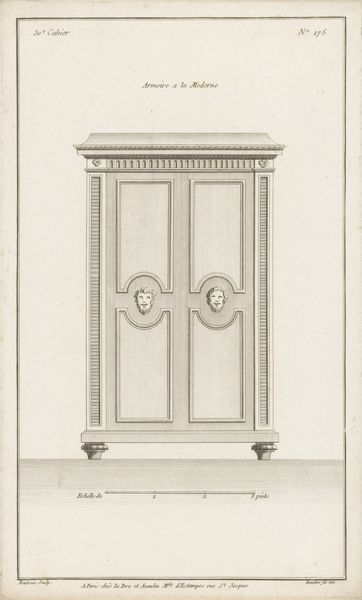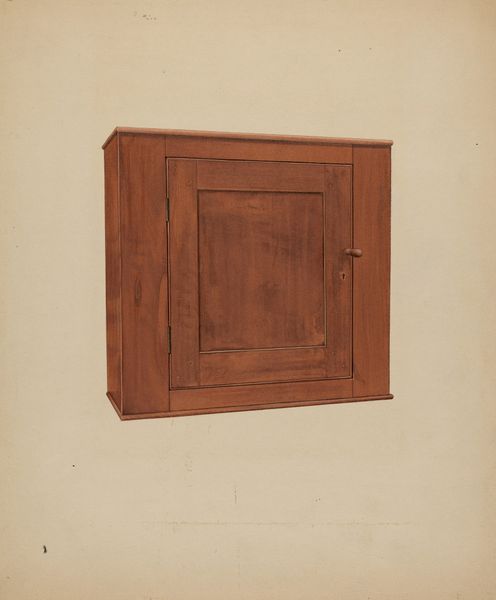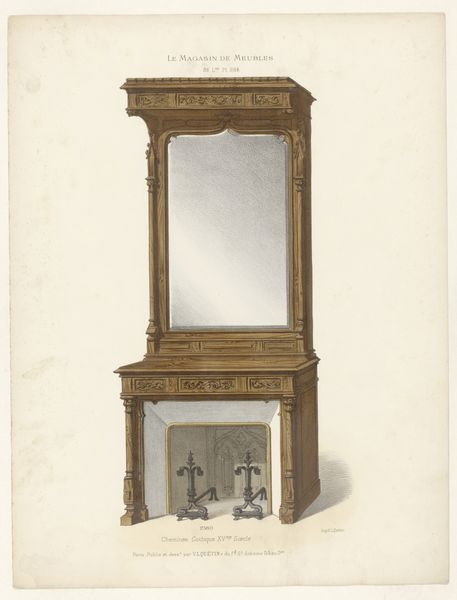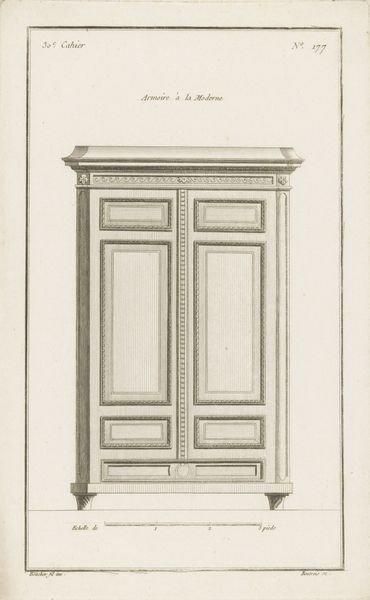
drawing, watercolor, pencil
#
portrait
#
drawing
#
water colours
#
watercolor
#
folk-art
#
pencil
#
academic-art
Dimensions: overall: 46 x 35 cm (18 1/8 x 13 3/4 in.) Original IAD Object: 32" high; 26 1/2" wide; 12" deep
Copyright: National Gallery of Art: CC0 1.0
Curator: Immediately, there's something so quiet and understated about this rendering. A little solemn. Editor: You're reacting to Angelo Bulone's "Zoar Blue Bonnet Cabinet," likely made around 1940. Bulone rendered the cabinet through watercolor and pencil. What draws you to that initial feeling? Curator: It's the muted tones, the flat application of color...and then, in the center, we have this burst of folk-art-inspired life. Are those...birds? Editor: Yes, stylized birds and what appears to be a heart and crown motif. Those emblems would've been very familiar to the cabinet’s intended community: the Zoarite Separatists. We can view this artwork as part of a much broader movement away from strict Victorian ornamentation towards more accessible styles that were popular during the Great Depression. This rendering showcases what was viewed as beautiful and valued through cultural heritage at this historical juncture. Curator: I find the heart and crown really potent. That union speaks of a collective devotion, perhaps faith but even possibly to each other, something very internal to their beliefs that these small, carefully chosen images symbolize. Editor: It echoes deeply, doesn't it? We need to consider the era in which Angelo Bulone captured the "Zoar Blue Bonnet Cabinet". Consider what aspects of traditional American iconography and material culture are amplified by this choice of subject. It isn't an original; the '1836' displayed prominently on the door points toward something more layered. Curator: So we're dealing with the past commenting on the past? What I wonder, is if by meticulously documenting the craft traditions in painting, like Bulone is doing, were these methods being memorialized during great change. Editor: Precisely, which asks further probing of this artist’s project to depict cultural change, preservation, but moreover, its visual significance beyond its surface aesthetics. Curator: Thanks for shedding more light on this rendering, with my added understanding and context this really makes a valuable social commentary. Editor: Indeed. And isn’t that the very essence of why art history remains deeply relevant.
Comments
No comments
Be the first to comment and join the conversation on the ultimate creative platform.

